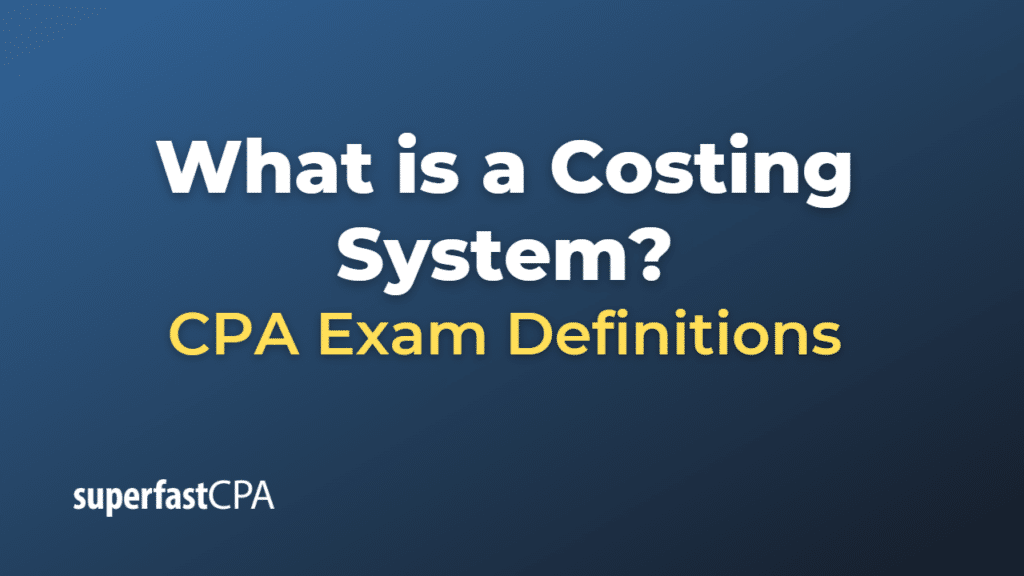Costing System
A costing system is a framework used by firms to estimate the cost of their products for profitability analysis, inventory valuation and cost control. Its goal is to identify the amount spent by a company to produce a product or provide a service. Estimating the accurate costs of products is critical for profitable operations.
There are several types of costing systems, each with its own strengths and weaknesses. The type of costing system a company uses often depends on the nature of its operations. Here are a few examples:
- Job Order Costing: This system is used when products are made based on specific orders from customers. Each job is accounted for separately, and the company tracks the direct materials, direct labor, and manufacturing overhead associated with each job. This system is often used in industries like construction, shipbuilding, or custom furniture.
- Process Costing: This system is used when a company produces a large volume of identical products. Costs are accumulated for a “process” or department, and the average cost per unit is calculated. This system is often used in industries like oil refining, food production, or chemical manufacturing.
- Activity-Based Costing (ABC): This system assigns costs to products based on the activities used in their production. The cost of each activity is allocated to each product to the extent that the product uses the activity. This system can be more accurate than traditional costing systems, especially for complex, modern manufacturing processes.
- Standard Costing: This system uses estimates or “standards” to assign costs to products. The company then compares the actual costs with the standard costs to measure performance.
Each of these costing systems provides a different way for a company to understand the cost of its products, which is crucial for setting prices, controlling costs, and making strategic decisions.
Example of a Costing System
Let’s consider a furniture manufacturing company to illustrate different costing systems:
- Job Order Costing: Suppose this furniture company gets an order from a customer for a custom-made dining table. The company would track the costs of the materials (wood, screws, finish, etc.), the labor (hours of work by carpenters), and the manufacturing overhead (electricity, depreciation of equipment, etc.) specifically for this job. All these costs would be accumulated in a “job cost sheet”. The total cost would then be used to determine the price of the custom-made dining table.
- Process Costing: Now, suppose the same company produces a standard line of chairs. These chairs are mass-produced in a continuous process. The company would track the costs of each production process or department (cutting, assembling, finishing, etc.) and calculate an average cost per unit. This average cost would then be used to determine the price of the chairs.
- Activity-Based Costing (ABC): Suppose the company wants to better understand the costs of its various activities. The company might identify activities like design, order materials, cut wood, assemble furniture, finish furniture, and ship furniture. The company would then allocate the costs of each of these activities to its products. This could help the company make more accurate pricing decisions and identify opportunities for cost savings.
- Standard Costing: The company might also set standard costs for its materials, labor, and overhead based on historical data or estimates. The company would then compare these standard costs with the actual costs incurred. If the actual costs are higher than the standard costs, this could signal a problem that needs to be addressed.
Each of these costing systems provides the company with different information and insights, which can help in managing costs and making strategic decisions.













